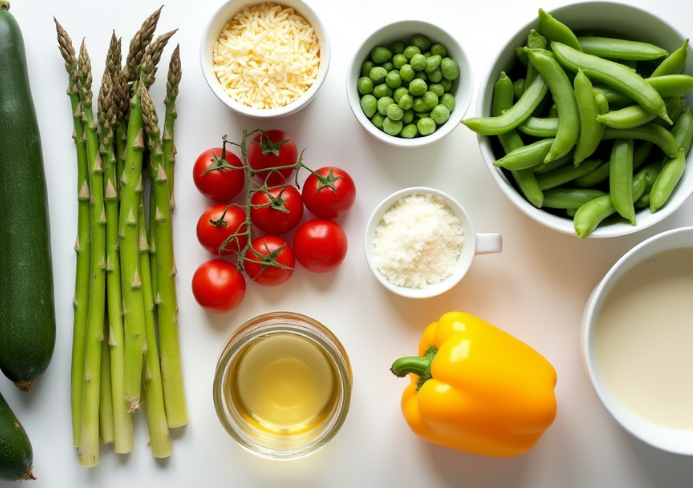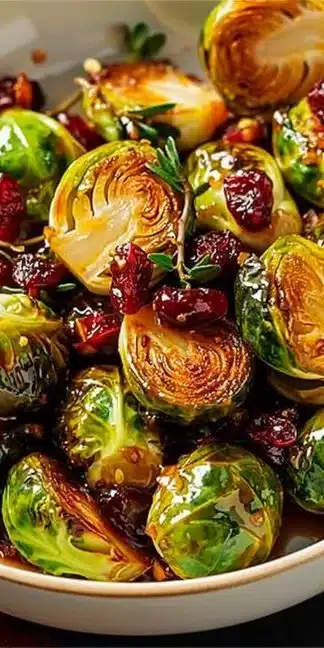Creamy Pasta Primavera: The Ultimate Guide for a Flavorful Spring Meal
Creamy Pasta Primavera is the perfect dish for anyone looking to celebrate the bounty of spring vegetables with a rich and satisfying twist. Traditionally a light and veggie-forward pasta, this primavera gets upgraded with a luxuriously creamy sauce that still lets the seasonal ingredients shine. Whether you’re cooking for a weeknight dinner or a cozy get-together, this dish delivers flavor, comfort, and freshness all in one bowl.
In this guide, we’ll dive into what makes Creamy Pasta Primavera so special, walk you through the step-by-step recipe, share top tips, common pitfalls to avoid, and answer popular questions along the way.
Table of Contents
🌿 What Is Creamy Pasta Primavera?
“Primavera” means “spring” in Italian, and the dish is designed to highlight fresh seasonal vegetables—typically the kinds you find at farmers markets this time of year. While traditional pasta primavera is tossed in olive oil or light broth, this creamy version introduces a smooth sauce made from cream, broth, cheese, or even non-dairy substitutes. It’s the perfect marriage of comfort food and garden-fresh flavors.
Want to know what veggies bring both flavor and nutrition to your plate? Check out these vegetable nutrition guidelines from the USDA.
🧄 What Makes the Sauce So Creamy?
The hallmark of this dish is the creamy primavera sauce, which transforms humble ingredients into a rich, restaurant-worthy experience. The key ingredients include:
- Heavy cream or half-and-half
- Parmesan cheese or a plant-based substitute
- Cornstarch or pasta water to thicken
- Butter and garlic for flavor
Looking for dairy-free cream alternatives? This Healthline article offers an excellent guide for vegan and lactose-intolerant cooks.
🍝 Ingredient Breakdown
Here’s what you’ll need for a classic Creamy Pasta Primavera:
Pasta
- Penne, fettuccine, or bowtie (farfalle) work well
- Whole wheat or gluten-free options are great substitutes
Vegetables
- Zucchini
- Asparagus
- Bell peppers
- Cherry or grape tomatoes
- Snow peas
- Petite peas
Sauce Base
- Heavy cream
- Chicken or vegetable broth
- Cornstarch slurry
- Shredded Parmesan cheese
Optional Add-ins
- Grilled chicken or shrimp
- Tofu or chickpeas for a plant-based protein boost
- Red chili flakes or lemon zest for extra flavor

👨🍳 How to Make Creamy Pasta Primavera – Step-by-Step
This easy, one-pan meal comes together in under 40 minutes.
- Cook the Pasta
Boil your pasta until al dente. Reserve ½ cup of pasta water. - Sauté the Vegetables
In a large skillet, melt butter and sauté garlic until fragrant. Add the firmer vegetables like zucchini and bell peppers first, then tomatoes and peas. - Make the Cream Sauce
Add broth and bring to a simmer. Stir in cream and let it cook down. Thicken with a cornstarch slurry or reserved pasta water. - Add Cheese and Combine
Stir in shredded Parmesan. Toss with cooked pasta and season to taste. - Serve Hot
Top with extra cheese, fresh basil, or lemon zest.
🥗 Nutritional Snapshot
While indulgent, this creamy pasta primavera can be made lighter with a few swaps.
- Per Serving (approx.)
- Calories: 450–600
- Protein: 15–20g
- Carbs: 50–60g
- Fat: 20–25g
Tips for a healthier version:
- Use low-fat cream or Greek yogurt
- Load up on extra veggies
- Opt for whole grain or chickpea pasta
🔄 Customization & Variations
This dish is endlessly flexible. Here are a few creative ways to make it your own:
- Vegan: Use cashew cream and nutritional yeast instead of dairy
- Gluten-Free: Use rice, lentil, or quinoa-based pasta
- Spicy: Add crushed red pepper or chipotle cream
- Mediterranean: Include olives, capers, and feta cheese
🔪 Pro Cooking Tips
To make the most of your creamy primavera, follow these expert tips:
- Don’t overcook your veggies—keep them tender-crisp
- Use reserved pasta water to adjust sauce thickness
- Add cheese off heat to avoid grainy texture
- Use fresh herbs like basil or parsley for brightness
🚫 Mistakes to Avoid
- Overboiling pasta: You want al dente, not mushy.
- Skipping the pasta water: It helps bind the sauce.
- Adding cold dairy to hot sauce: Always temper cream before mixing.
🍷 What to Serve With Creamy Pasta Primavera
Make it a meal by adding one or more of the following:
- Wine: Crisp white wines like Sauvignon Blanc or Pinot Grigio
- Side salad: Arugula, spinach, or Caesar salad
- Bread: Garlic knots or focaccia
- Toppings: Cracked black pepper, lemon zest, red chili flakes
🧊 Make-Ahead & Storage
- Store in the fridge for up to 3 days
- Reheat gently over low heat to maintain creaminess
- Add a splash of milk or broth if the sauce thickens too much
- Avoid freezing (cream sauces often separate)
🌀 Popular Variations
- Creamy Primavera with Chicken
Add grilled or shredded chicken for extra protein. - Creamy Primavera with Shrimp
Sauté shrimp in garlic and butter and fold into the pasta at the end. - Vegan Primavera
Use coconut or cashew cream, plant-based cheese, and skip animal protein. - Lemon-Parmesan Primavera
Add lemon zest and juice for a citrusy kick.
❓ Frequently Asked Questions
What is Pasta Primavera sauce made of?
Typically a blend of heavy cream, broth, Parmesan cheese, and thickener like cornstarch.
Can I use frozen vegetables?
Yes! Just make sure to thaw and drain before sautéing to avoid excess moisture.
How do you thicken creamy pasta sauce?
Use a cornstarch slurry, flour roux, or reserved pasta water.
Is it healthy?
It can be! Swap in light cream, more vegetables, and whole grain pasta for a healthier creamy pasta primavera.
What’s the best pasta shape?
Fettuccine, penne, and bowtie are best—they hold sauce and veggies well.
🏁 Final Thoughts
Creamy Pasta Primavera is the ultimate comfort-meets-seasonal dish. It’s simple, customizable, and ideal for both weeknight dinners and special occasions. Try different vegetables, play with creamy sauces, and enjoy how easy it is to bring a taste of spring to your table—any time of the year.






